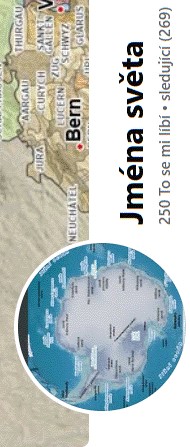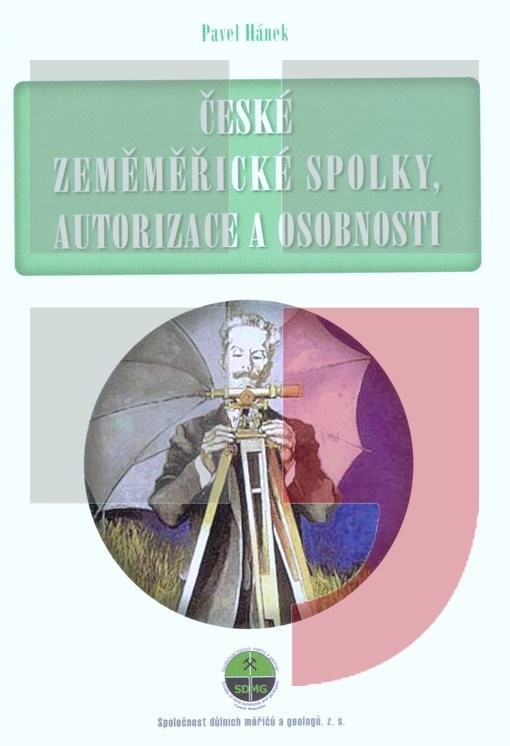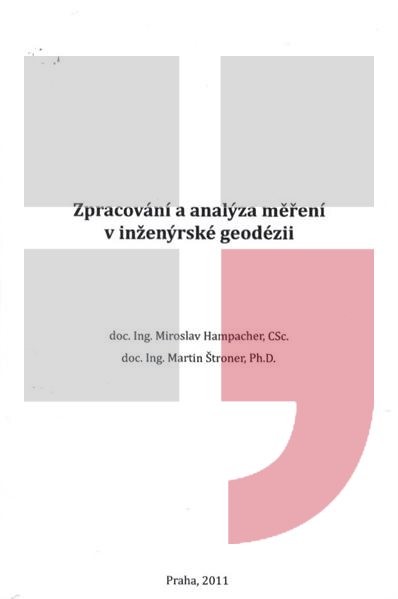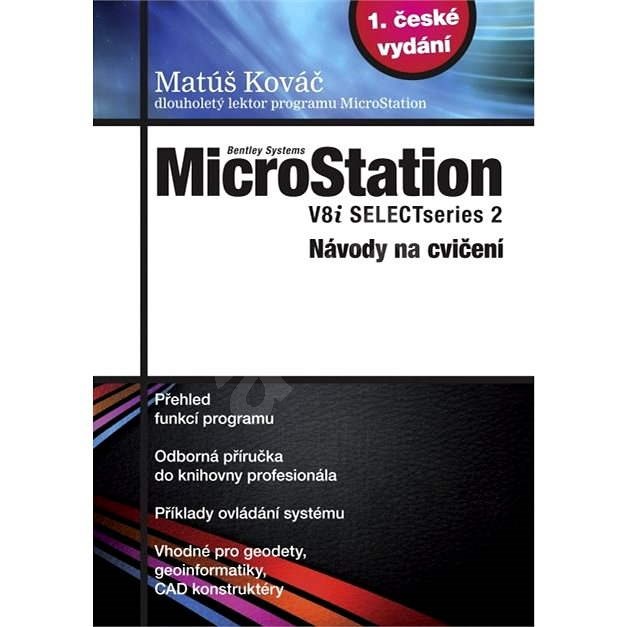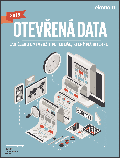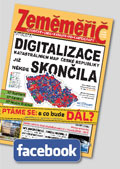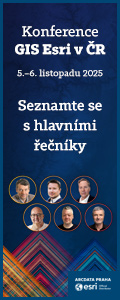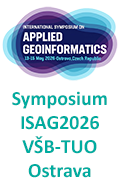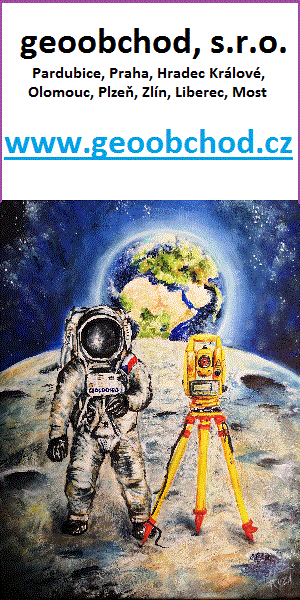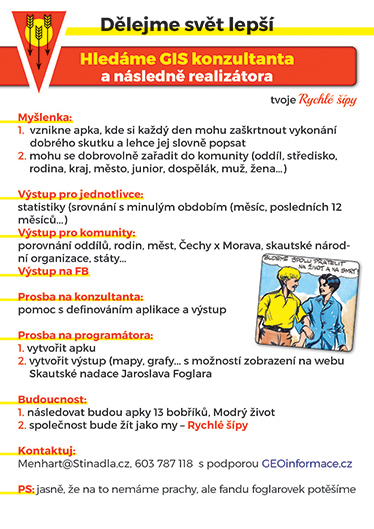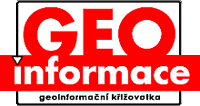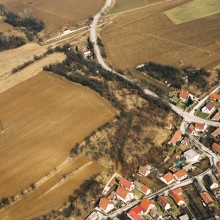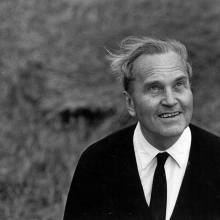zprávy
zdroje zpráv:Asistent/ka
26.4.2017 10:26 ČÚZK - předpisy a opatření Zeměměřický úřadvypisuje výběrové řízení na místo
Asistent/ka
Ocenění na Ministerstvu kultury za Kalendář 2017 od Czechtourismu s našimi fotkami a titulkou
26.4.2017 10:23 UpVision Upvision je zmíněn v tiskové zprávě CzechTourismu u příležitosti ocenění kalendáře Barokní Česko 2017 od CzechTourismu s několika našimi leteckými fotkami a titulní stranou. Kalendář byl oceněn na Ministerstvu kultury v prestižní soutěži Příběhy a umění - kalendář 2017.Tisková zpráva zde:
https://www.czechtourism.cz/clanky/kalendar-z-produkce-czechtourism-barokni-cesko-20/
Rada/odborný rada – rozhodování o povolení vkladu v právním oddělení Katastrálního pracoviště České
26.4.2017 9:25 ČÚZK /Urady/Katastralni-urady/Katastralni-urady/Katastralni-urad-pro-Jihocesky-kraj/Uredni-deska/Oznameni-a-jina-uredni-sdeleni/Volna-mista/Rada-odborny-rada-–-rozhodovani-o-povoleni-vkladuRada/odborný rada – rozhodování o povolení vkladu v právním oddělení Katastrálního pracoviště České
26.4.2017 9:25 ČÚZK - volná místa Katastrální úřad pro Jihočeský kraj, Katastrální pracoviště České Budějovice vypisuje výběrové řízení na místo Rada/odborný rada – rozhodování o povolení vkladu v právním oddělení Katastrálního pracoviště ČeskéRada/odborný rada – rozhodování o povolení vkladu v právním oddělení Katastrálního pracoviště České
26.4.2017 9:25 ČÚZK - předpisy a opatření Katastrální úřad pro Jihočeský kraj Katastrální pracoviště České Budějovicevypisuje výběrové řízení na místo
Rada/odborný rada – rozhodování o povolení vkladu v právním oddělení Katastrálního pracoviště České Budějovice
20170426 Odborný rada právního oddělení KP Praha-východ
26.4.2017 8:38 ČÚZK /Urady/Katastralni-urady/Katastralni-urady/Katastralni-urad-pro-Stredocesky-kraj/Katastralni-pracoviste/KP-Praha-vychod/O-uradu/Aktuality/20152509-Oznameni-na-reditele-PZ-(6)20170426 Odborný rada právního oddělení KP Praha-východ
26.4.2017 8:38 ČÚZK - předpisy a opatření Na úřední elektronické desce Katastrálního úřadu pro Středočeský kraj, v sekci "Oznámení a jiná úřední sdělení"bylo vystaveno "Oznámení o vyhlášení výběrového řízení na služební místo Odborný rada právního oddělení Katastrálního pracoviště Praha - východ"Odborný rada právního oddělení
26.4.2017 8:36 ČÚZK /Urady/Katastralni-urady/Katastralni-urady/Katastralni-urad-pro-Stredocesky-kraj/Uredni-deska/Oznameni-a-jina-uredni-sdeleni/Volna-mista/Odborny-rada-pravniho-oddeleniOdborný rada právního oddělení
26.4.2017 8:36 ČÚZK - volná místa Katastrální úřad pro Středočeský kraj, Katastrální pracoviště Praha-východ vypisuje výběrové řízení na místo Odborný rada právního odděleníOdborný rada právního oddělení
26.4.2017 8:36 ČÚZK - předpisy a opatření Katastrální úřad pro Středočeský kraj Katastrální pracoviště Praha-východvypisuje výběrové řízení na místo Odborný rada právního oddělení
Odborný rada právního oddělení
ArcGIS za 100 dolarů ročně
26.4.2017 8:10 GeoBusinessArcGIS od americké firmy Esri je známý geografický informační systém, určený pro práci s prostorovými daty. Data můžete v ArcGISu nejen vytvářet a spravovat, ale především je analyzovat, hledat mezi nimi…
The post ArcGIS za 100 dolarů ročně appeared first on GeoBusiness.
Elektronická rezervace
26.4.2017 7:14 ČÚZK /Urady/Katastralni-urady/Katastralni-urady/Katastralni-urad-pro-Vysocinu/Katastralni-pracoviste/KP-Havlickuv-Brod/O-uradu/Aktuality/Elektronicka-rezervaceElektronická rezervace
26.4.2017 7:14 ČÚZK - předpisy a opatření Vážení klienti,v rámci zkvalitňování služeb jsme pro Vás na Katastrálním pracovišti Havlíčkův Brod připravili systém elektronické rezervace.
Zde se můžete objednat na Vámi zvolenou hodinu a předejít tak čekání ve frontě na podání vkladu nebo záznamu, poskytnutí údajů z katastru nemovitostí a dalších služeb poskytovaných katastrálním pracovištěm.
WMS INSPIRE Rozložení druhů
26.4.2017 2:00 Cenia - Katalog metadat ČR - INSPIRE Služba zobrazuje rozšíření evropsky významných druhů v polích síťového mapování (síť ETRS, pole 10 x 10 km) v České republice. Stav k roku 2013. © AOPK ČREuropean biogeographic region
26.4.2017 2:00 Cenia - Katalog metadat ČR - INSPIRE The intersection of the vector version of the cartogram published in: European Topic Centre of Biological Diversity (2006). The indicative map of European biogeographical regions: Methodology and development. Ed. 1. Paris: Muséum National d'Histoire Naturelle. 13 s.WMS INSPIRE Biogeographical Regions
26.4.2017 2:00 Cenia - Katalog metadat ČR - INSPIRE The service displays the boudaries of European biogeographical regions on the territory of Czechia; NCACRÚvodní jednání k zahájení řízení o komplexních pozemkových úpravách v k. ú. Skuhrov
26.4.2017 0:00 Státní pozemkový úřadSetkání zástupců SPÚ, Pobočky Louny, s širokou veřejností obcí Ročov, Břínkov a Úlovice
26.4.2017 0:00 Státní pozemkový úřadÚvodní jednání k zahájení řízení o komplexních pozemkových úpravách v k. ú. Skuhrov
26.4.2017 0:00 Státní pozemkový úřad Státní pozemkový úřad, Pobočka Mělník pořádá úvodní jednání pro KoPÚ v k. ú. Skuhrov. Úvodní jednání proběhne od 16 hodin dne 25. 5. 2017 ve Volnočasovém centru Obce Velký Borek č. p. 207. Na jednání jsou zváni účastníci řízení KoPÚ Skuhrov.Workshop "Úloha BPEJ z hlediska tvorby krajiny"
26.4.2017 0:00 Státní pozemkový úřad Krajský pozemkový úřad pro Středočeský kraj a hlavní město Praha si Vás dovoluje pozvat na odborný workshop "Úloha BPEJ z hlediska tvorby krajiny"Nominace map na světovou konferenci Esri
25.4.2017 16:29 GeoBusinessKaždoroční světová uživatelská konference Esri přitáhne do San Diega v polovině července přes 14 tisíc zákazníků a obchodních partnerů. Chcete mít svoji mapu v úvodní prezentaci Jacka Dangermonda? Pochlubte se…
The post Nominace map na světovou konferenci Esri appeared first on GeoBusiness.
Mise Maxus-9 nabídla několik minut mikrogravitace
25.4.2017 16:11 Český Kosmický PortálBěhem letu suborbitální rakety Maxus-9 v pátek 7. dubna bylo pět vědeckých experimentů vystaveno působení dvanácti minut stavu beztíže.
2017
25.4.2017 14:14 ČÚZK /Urady/Zememericke-a-katastralni-inspektoraty/Zememericke-a-katastralni-inspektoraty/Zememericky-a-katastralni-inspektorat-v-Plzni/Casto-hledane-informace/Poskytovani-informaci-106-1999-Sb/Zverejneni-obsahu-informaci-poskytnutych-na-za-(1)/2017Zveřejnění obsahu informací poskytnutých na žádost dle zákona č. 106/1999 Sb. za rok 20
25.4.2017 14:14 ČÚZK - předpisy a opatření Zeměměřický a katastrální inspektorát v Plznizveřejňuje obsah informace poskytnutých na žádost dle zákona č. 106/1999 Sb. za rok
2017
2017
25.4.2017 14:14 ČÚZK - předpisy a opatření Zeměměřický a katastrální inspektorát v Plznizveřejňuje obsah informace poskytnutých na žádost dle zákona č. 106/1999 Sb. za rok
2017
Zveřejnění obsahu informací poskytnutých na žádost dle zákona č. 106/1999 Sb. za rok 20
25.4.2017 14:14 ČÚZK /Urady/Zememericke-a-katastralni-inspektoraty/Zememericke-a-katastralni-inspektoraty/Zememericky-a-katastralni-inspektorat-v-Plzni/Casto-hledane-informace/Poskytovani-informaci-106-1999-Sb/Zverejneni-obsahu-informaci-poskytnutych-na-za-(1)/20172016
25.4.2017 14:13 ČÚZK /Urady/Zememericke-a-katastralni-inspektoraty/Zememericke-a-katastralni-inspektoraty/Zememericky-a-katastralni-inspektorat-v-Plzni/Casto-hledane-informace/Poskytovani-informaci-106-1999-Sb/Zverejneni-obsahu-informaci-poskytnutych-na-za-(1)/20162016
25.4.2017 14:13 ČÚZK - předpisy a opatření Zeměměřický a katastrální inspektorát v Plznizveřejňuje obsah informace poskytnutých na žádost dle zákona č. 106/1999 Sb. za rok
2016
Odborný referent v oddělení právních vztahů k nemovitostem Katastrálního pracoviště Trutnov
25.4.2017 13:42 ČÚZK - předpisy a opatření Katastrální úřad pro Královéhradecký kraj Katastrální pracoviště Trutnovvypisuje výběrové řízení na místo
Odborný referent v oddělení právních vztahů k nemovitostem Katastrálního pracoviště Trutnov
Odborný referent v oddělení právních vztahů k nemovitostem Katastrálního pracoviště Trutnov
25.4.2017 13:42 ČÚZK /Urady/Katastralni-urady/Katastralni-urady/Katastralni-urad-pro-Kralovehradecky-kraj/Uredni-deska/Oznameni-a-jina-uredni-sdeleni/Volna-mista/Odborny-referent-v-oddeleni-pravnich-vztahu-k-(3)Odborný referent v oddělení právních vztahů k nemovitostem Katastrálního pracoviště Trutnov
25.4.2017 13:42 ČÚZK - volná místa Katastrální úřad pro Královéhradecký kraj, Katastrální pracoviště Trutnov vypisuje výběrové řízení na místo Odborný referent v oddělení právních vztahů k nemovitostem Katastrálního pracoviště TrutnovNabídka nepotřebného majetku
25.4.2017 13:39 ČÚZK /Urady/Katastralni-urady/Katastralni-urady/Katastralni-urad-pro-Olomoucky-kraj/Nabidky-majetku/Nabidka-2017Nabídka nepotřebného majetku
25.4.2017 13:39 ČÚZK - předpisy a opatřeníKatastrální úřad pro Olomoucký kraj nabízí nepotřebný majetek k odkupu. Jedná se o
Nabídka nepotřebného majetku
Odborný referent/vrchní referent v oddělení aktualizace a dokumentace katastru nemovitostí Katastrál
25.4.2017 13:11 ČÚZK /Urady/Katastralni-urady/Katastralni-urady/Katastralni-urad-pro-Ustecky-kraj/Uredni-deska/Oznameni-a-jina-uredni-sdeleni/Volna-mista/Odborny-referent-vrchni-referent-v-oddeleni-aktualOdborný referent/vrchní referent v oddělení aktualizace a dokumentace katastru nemovitostí Katastrál
25.4.2017 13:11 ČÚZK - předpisy a opatření Katastrální úřad pro Ústecký kraj Katastrální pracoviště Lounyvypisuje výběrové řízení na místo
Odborný referent/vrchní referent v oddělení aktualizace a dokumentace katastru nemovitostí Katastrálního pracoviště Louny na Katastrálním úřadu pro Ústecký kraj
Odborný referent/vrchní referent v oddělení aktualizace a dokumentace katastru nemovitostí Katastrál
25.4.2017 13:11 ČÚZK - volná místa Katastrální úřad pro Ústecký kraj, Katastrální pracoviště Louny vypisuje výběrové řízení na místo Odborný referent/vrchní referent v oddělení aktualizace a dokumentace katastru nemovitostí KatastrálV seznamu mapových služeb obla
25.4.2017 12:00 Plzeňský kraj V seznamu mapových služeb oblasti Územně analytické podklady ORP (http://geoportal.plzensky-kraj.cz/gs/uzemne-analyticke-podklady-orp/) byla aktualizována mapová služba Základní výkresy územně analytických podkladů obcí s rozšířenou působností (http://mapy.kr-plzensky.cz/gis/uap_orp_vykresy) a Souhrnná dlaždicová mapová služba zobrazující všechny jevy ÚAP ORP (http://mapy.kr-plzensky.cz/gis/uap_orp_vse_cache).Data katastru nemovitostí včet
25.4.2017 12:00 Jihočeský kraj Data katastru nemovitostí včetně účelové katastrální mapy byla v mapových aplikacích i výdejním modulu aktualizována k 1. 4. 2017.V seznamu mapových služeb obla
25.4.2017 12:00 Plzeňský kraj V seznamu mapových služeb oblasti Územně analytické podklady ORP byla aktualizována mapová služba Základní výkresy územně analytických podkladů obcí s rozšířenou působností a Souhrnná dlaždicová mapová služba zobrazující všechny jevy ÚAP ORP.vidiecka platforma a pozemkové úpravy
25.4.2017 11:20 Komora pozemkových úprav SRvidiecka platforma má sympatickú inicatívu a zúčastnili sme sa okrúhleho stola dňa 20.04.2017 o poľnohospodárstve. nedá mi však, aby som nepripojil svoje názory na ich iniciatívu.
Final countdown to the 2nd Galileo Hackathon
25.4.2017 11:17 European GNSS Agency
The Galileo Hackathon is less than one month away – are you ready to show off your coding skills?
The second GSA Galileo Hackathon is right around the corner, and passionate coders across Europe are already fine-tuning their innovative ideas. If you haven’t already done so, don’t delay – register today!
Scheduled for 15 to 17 May in Gdańsk, Poland, the Galileo Hackathon is a unique opportunity to be among the first to work with Galileo-enabled mobile phones. The objective: to develop an innovative application that makes full use of Galileo’s capabilities and provides an added commercial or societal value.
Thanks to our technology partner Samsung, teams will be provided with a Galileo-enabled Samsung S8+ Android smartphone to use during the Hackathon. The phones feature Android 7.0 (i.e. Nougat), which gives application developers access to raw GNSS measurements directly from the Samsung phone. This unique feature opens up the possibility for higher accuracy and the development of algorithms traditionally restricted to more advanced GNSS receivers.
Hackathon teams will also have access to a plug-and-play location stack, provided courtesy of our partner HyperTrack. Onsite mentoring will be provided by the University of Nottingham’s GRACE, Nottingham Geospatial Institute’s business engagement unit.
A panel of experts
Participants will compete for one of three EUR 1 000 cash prizes, which will be awarded on the Infoshare mainstage on 17 May. A panel of GNSS and mobility experts from Nottingham Geospatial Institute, the GSA, Beuth University of Technology Berlin, the European Space Agency (ESA), Samsung, Airbus, Hypertrack and Blue Dot Solutions will evaluate solutions based on innovation, market potential, Galileo-relevance, level of completion and progress.
Join us @infoShare too!
The Hackathon is being held in conjunction with infoShare 2017, scheduled for 17 to 19 May in Gdańsk. All Hackathon participants get free registration to the event, where they can join in on an array of discussions and learning opportunities – including the GSA’s session Look inside your smartphone and learn why accuracy matters!. This session takes place on 17 May from 15:15 – 15:45 and will feature representatives from Broadcom, Samsung and Android.
Also of interest to the GEO-IoT/ location-based community, are a series of sessions on 15 May from 13:00-15:00 featuring:
- Overview of Galileo and its added value in location-based services by the GSA
- An update on the Galileo system status by the ESA
- A presentation of the Samsung S8 smartphone by Samsung
- Test results of Galileo integration in handsets by Airbus
- How to boost your location-aware app using HyperTrack
- An introduction to GNSS raw measurements in smartphones by Nottingham University
Register for the event here.
Prepare for the Galileo Hackathon with a pre-event webinarIn preparation for the upcoming 2nd Galileo Hackathon, the GSA is organising a one hour webinar on 28 April from 14:00 – 15:00 CET. Topics include an introduction to Galileo, an overview of Hackathon rules and prizes and a special presentation on GNSS raw measurements and how to use them in your location-based apps. Registration is free, and more information can be found here.
|
Media note: This feature can be republished without charge provided the European GNSS Agency (GSA) is acknowledged as the source at the top or the bottom of the story. You must request permission before you use any of the photographs on the site. If you republish, we would be grateful if you could link back to the GSA website (http://www.gsa.europa.eu).
Final countdown to the 2nd Galileo Hackathon
25.4.2017 11:17 European GNSS Agency
The Galileo Hackathon is less than one month away – are you ready to show off your coding skills?
The second GSA Galileo Hackathon is right around the corner, and passionate coders across Europe are already fine-tuning their innovative ideas. If you haven’t already done so, don’t delay – register today!
Scheduled for 15 to 17 May in Gdańsk, Poland, the Galileo Hackathon is a unique opportunity to be among the first to work with Galileo-enabled mobile phones. The objective: to develop an innovative application that makes full use of Galileo’s capabilities and provides an added commercial or societal value.
Thanks to our technology partner Samsung, teams will be provided with a Galileo-enabled Samsung S8+ Android smartphone to use during the Hackathon. The phones feature Android 7.0 (i.e. Nougat), which gives application developers access to raw GNSS measurements directly from the Samsung phone. This unique feature opens up the possibility for higher accuracy and the development of algorithms traditionally restricted to more advanced GNSS receivers.
Hackathon teams will also have access to a plug-and-play location stack, provided courtesy of our partner HyperTrack. Onsite mentoring will be provided by the University of Nottingham’s GRACE, Nottingham Geospatial Institute’s business engagement unit.
A panel of experts
Participants will compete for one of three EUR 1 000 cash prizes, which will be awarded on the Infoshare mainstage on 17 May. A panel of GNSS and mobility experts from Nottingham Geospatial Institute, the GSA, Beuth University of Technology Berlin, the European Space Agency (ESA), Samsung, Airbus, Hypertrack and Blue Dot Solutions will evaluate solutions based on innovation, market potential, Galileo-relevance, level of completion and progress.
Join us @infoShare too!
The Hackathon is being held in conjunction with infoShare 2017, scheduled for 17 to 19 May in Gdańsk. All Hackathon participants get free registration to the event, where they can join in on an array of discussions and learning opportunities – including the GSA’s session Look inside your smartphone and learn why accuracy matters!. This session takes place on 17 May from 15:15 – 15:45 and will feature representatives from Broadcom, Samsung and Android.
Also of interest to the GEO-IoT/ location-based community, are a series of sessions on 15 May from 13:00-15:00 featuring:
- Overview of Galileo and its added value in location-based services by the GSA
- An update on the Galileo system status by the ESA
- A presentation of the Samsung S8 smartphone by Samsung
- Test results of Galileo integration in handsets by Airbus
- How to boost your location-aware app using HyperTrack
- An introduction to GNSS raw measurements in smartphones by Nottingham University
Register for the event here.
Prepare for the Galileo Hackathon with a pre-event webinarIn preparation for the upcoming 2nd Galileo Hackathon, the GSA is organising a one hour webinar on 28 April from 14:00 – 15:00 CET. Topics include an introduction to Galileo, an overview of Hackathon rules and prizes and a special presentation on GNSS raw measurements and how to use them in your location-based apps. Registration is free, and more information can be found here.
|
Media note: This feature can be republished without charge provided the European GNSS Agency (GSA) is acknowledged as the source at the top or the bottom of the story. You must request permission before you use any of the photographs on the site. If you republish, we would be grateful if you could link back to the GSA website (http://www.gsa.europa.eu).
Final countdown to the 2nd Galileo Hackathon
25.4.2017 11:17 European GNSS Agency
The Galileo Hackathon is less than one month away – are you ready to show off your coding skills?
The second GSA Galileo Hackathon is right around the corner, and passionate coders across Europe are already fine-tuning their innovative ideas. If you haven’t already done so, don’t delay – register today!
Scheduled for 15 to 17 May in Gdańsk, Poland, the Galileo Hackathon is a unique opportunity to be among the first to work with Galileo-enabled mobile phones. The objective: to develop an innovative application that makes full use of Galileo’s capabilities and provides an added commercial or societal value.
Thanks to our technology partner Samsung, teams will be provided with a Galileo-enabled Samsung S8+ Android smartphone to use during the Hackathon. The phones feature Android 7.0 (i.e. Nougat), which gives application developers access to raw GNSS measurements directly from the Samsung phone. This unique feature opens up the possibility for higher accuracy and the development of algorithms traditionally restricted to more advanced GNSS receivers.
Hackathon teams will also have access to a plug-and-play location stack, provided courtesy of our partner HyperTrack. Onsite mentoring will be provided by the University of Nottingham’s GRACE, Nottingham Geospatial Institute’s business engagement unit.
A panel of experts
Participants will compete for one of three EUR 1 000 cash prizes, which will be awarded on the Infoshare mainstage on 17 May. A panel of GNSS and mobility experts from Nottingham Geospatial Institute, the GSA, Beuth University of Technology Berlin, the European Space Agency (ESA), Samsung, Airbus, Hypertrack and Blue Dot Solutions will evaluate solutions based on innovation, market potential, Galileo-relevance, level of completion and progress.
Join us @infoShare too!
The Hackathon is being held in conjunction with infoShare 2017, scheduled for 17 to 19 May in Gdańsk. All Hackathon participants get free registration to the event, where they can join in on an array of discussions and learning opportunities – including the GSA’s session Look inside your smartphone and learn why accuracy matters!. This session takes place on 17 May from 15:15 – 15:45 and will feature representatives from Broadcom, Samsung and Android.
Also of interest to the GEO-IoT/ location-based community, are a series of sessions on 15 May from 13:00-15:00 featuring:
- Overview of Galileo and its added value in location-based services by the GSA
- An update on the Galileo system status by the ESA
- A presentation of the Samsung S8 smartphone by Samsung
- Test results of Galileo integration in handsets by Airbus
- How to boost your location-aware app using HyperTrack
- An introduction to GNSS raw measurements in smartphones by Nottingham University
Register for the event here.
Prepare for the Galileo Hackathon with a pre-event webinarIn preparation for the upcoming 2nd Galileo Hackathon, the GSA is organising a one hour webinar on 28 April from 14:00 – 15:00 CET. Topics include an introduction to Galileo, an overview of Hackathon rules and prizes and a special presentation on GNSS raw measurements and how to use them in your location-based apps. Registration is free, and more information can be found here.
|
Media note: This feature can be republished without charge provided the European GNSS Agency (GSA) is acknowledged as the source at the top or the bottom of the story. You must request permission before you use any of the photographs on the site. If you republish, we would be grateful if you could link back to the GSA website (http://www.gsa.europa.eu).
Veřejná vyhláška - Zeměměřický úřad oznamuje
25.4.2017 11:14 Zeměměřický úřadVeřejná vyhláška - Zeměměřický úřad oznamuje
Veřejná vyhláška - Zeměměřický úřad oznamuje
25.4.2017 11:14 Zeměměřický úřadVeřejná vyhláška - Zeměměřický úřad oznamuje
Veřejná vyhláška - Zeměměřický úřad oznamuje
25.4.2017 11:14 Zeměměřický úřadVeřejná vyhláška - Zeměměřický úřad oznamuje
Veřejná vyhláška - Zeměměřický úřad oznamuje
25.4.2017 11:14 Zeměměřický úřadVeřejná vyhláška - Zeměměřický úřad oznamuje
Mzdová účetní
25.4.2017 9:45 Zeměměřický úřad Zeměměřický úřadvypisuje výběrové řízení na místo
Mzdová účetní
Mzdová účetní
25.4.2017 9:45 ČÚZK /Urady/Zememericky-urad/Uredni-deska/Oznameni-a-jina-uredni-sdeleni/Volna-mista/Mzdova-ucetniMzdová účetní
25.4.2017 9:45 ČÚZK - volná místa Zeměměřický úřad, vypisuje výběrové řízení na místo Mzdová účetníMzdová účetní
25.4.2017 9:45 ČÚZK - předpisy a opatření Zeměměřický úřadvypisuje výběrové řízení na místo
Mzdová účetní
Odborný rada – Vedoucí oddělení metodiky a kontroly
25.4.2017 8:41 ČÚZK - předpisy a opatření Katastrální úřad pro Karlovarský krajvypisuje výběrové řízení na místo
Odborný rada – Vedoucí oddělení metodiky a kontroly
Odborný rada – Vedoucí oddělení metodiky a kontroly
25.4.2017 8:41 ČÚZK - volná místa Katastrální úřad pro Karlovarský kraj, vypisuje výběrové řízení na místo Odborný rada – Vedoucí oddělení metodiky a kontrolyOdborný rada – Vedoucí oddělení metodiky a kontroly
25.4.2017 8:41 ČÚZK /Urady/Katastralni-urady/Katastralni-urady/Katastralni-urad-pro-Karlovarsky-kraj/Uredni-deska/Oznameni-a-jina-uredni-sdeleni/Volna-mista/Odborny-rada-–-Vedouci-oddeleni-metodiky-a-kontrol22. KK - poslední dny registrace za zvýhodněné vložné
25.4.2017 7:00 Česká asociace pro geoinformaceDo 2. května 2017 je možné se registrovat na 22. kartografickou konferenci za zvýhodněné vložné. Pro registraci je možné využít webový formulář.
Konferenci pořádají Česká kartografická společnost a Technická univerzita v Liberci od 6. do 8. září 2017, letos s podtitulem Kartografie bez hranic.
Do 2. května 2017 je možné se registrovat na 22. kartografickou
Katalogová služba Národního památkového ústavu
25.4.2017 2:00 Cenia - Katalog metadat ČR - INSPIRE Mapové služby a datové sady geografické části integrovaného informačního systému památkové péče.WMS INSPIRE Bioregiony
25.4.2017 2:00 Cenia - Katalog metadat ČR - INSPIRE Služba zobrazuje hranice evropských bioregionů v České republice; © AOPK ČRDokončení přechodu ke standardnímu kódu EPSG 5514
24.4.2017 18:13 Asociace poskytovatelů služeb v pozemkových úpravách ČÚZK: Geoportál Dokončení přechodu ke standardnímu kódu EPSG 5514 a zrušení podpory prozatímního kódu 102067 pro síťové služby k 1.7.2017 V roce 2011 byla v prohlížecích a následně stahovacích službách resortu ČÚZK zavedena podpora kódu EPSG 5514 pro poskytování služeb v souřadnicovém systému S-JTSK / Krovak East North, který je standardizován v rámci mezinárodního registru…Novela katastrální vyhlášky
24.4.2017 18:10 Asociace poskytovatelů služeb v pozemkových úpravách zdroj: ČÚZK Dne 29. 3. 2017 byla ve Sbírce zákonů uveřejněna vyhláška č. 87/2017 Sb., kterou se mění vyhláška č. 357/2013 Sb., o katastru nemovitostí (katastrální vyhláška). Účinnost vyhlášky nastává dnem 1. 4. 2017. Diferenční znění (pracovní pomůcka) ke stažení.Metodický pokyn pro aktualizaci BPEJ
24.4.2017 18:00 Asociace poskytovatelů služeb v pozemkových úpravách Aktualizovaný Metodický pokyn pro aktualizaci BPEJ jehož účelem je seznámit Krajské pozemkové úřady, pobočky KPÚ, zaměstnance Odboru půdní služby, zaměstnance Odboru provozu ICT a technické infrastruktury (oddělení správy dat), katastrální pracoviště a zpracovatele pozemkových úprav s rozdělením pracovních aktivit v procesu aktualizace BPEJ a souvisejících činností mezi dotčené organizační útvary, organizační jednotky a subjekty, s…Applications Open for Special Prize Celebrating 60 Years of Europe
24.4.2017 15:55 European GNSS Agency
Within the context of the European Satellite Navigation Competition (ESNC), a ‘60 Years of EU Special Prize’ focuses on the contribution that Europe’s space programmes make to European integration. The prize will award the very best ideas that use European GNSS to bring Europe closer together. Potential applications could address, for example, such EU political priorities as traffic and transport management for the efficient cross-border transportation of goods, travel platforms that encourage people to travel from one country to another, and so on.
Watch this: Europe for Space, Space for Europe
2017 is a significant year for both the European Union and Europe’s space programmes. This year Europe celebrates the 60th anniversary of the signing of the Treaty of Rome, which, by establishing ‘an ever closer union among the peoples of Europe’, laid the foundation for building the EU. For 60 years, European nations have worked together towards a common goal: a peaceful, united and prosperous Europe. Together, they created something that no single European nation could do on their own, thus strengthening and growing European integration in many important areas – including the EU’s flagship space programmes: Galileo, EGNOS and Copernicus.
Eligibility criteria
All proposals for the Prize must use European GNSS as the primary means of positioning. Moreover, all ideas should be technically operative, innovative, demonstrate market potential and contribute to the adoption of Galileo. Proposals will be evaluated according to the following criteria:
- Innovative approach over existing solutions
- Commercial feasibility
- Use of European GNSS signals and services
- Contribution to the market uptake of Galileo
- Technical/operational feasibility, including maturity of the idea
- Demonstrations/market trials for technology validation
- Contribution to European integration
The winners will have the opportunity to develop their idea at a suitable incubation centre of their choice within the EU28 for six months, with the option of a six-month extension based on an evaluation after the first six-month period (a total value of up to EUR 40,000). In addition, the winning idea will benefit from extensive promotion through the GSA’s many marketing channels and at relevant industry events.
Previous winners
The 2016 GSA Special Prize was won by Space Geomatica for the project Drones2GNSS - the Future of Surveying: UAV-assisted GNSS Positioning in Obstructed Environments. This project uses a drone equipped with a highly accurate GNSS receiver and a camera/laser measuring system to overcome obstacles to GNSS positioning accuracy caused by buildings, vegetation and other interference.
You can check out all previous GSA special prize winners here.
How to apply
Applications for the GSA prize and other ESNC special prizes and regional prizes can be submitted via the ESNC website. To find out what you need to do to take part, please follow the link to How to Participate. For more information about related events, visit the Events section on the site.
The ESNC overall winner is selected from all regional and special prize winners by an international panel of high-ranking experts. All of this year’s winners will be announced at a ceremony held during Estonian Space Week in Tallinn, Estonia, in November.
Media note: This feature can be republished without charge provided the European GNSS Agency (GSA) is acknowledged as the source at the top or the bottom of the story. You must request permission before you use any of the photographs on the site. If you republish, we would be grateful if you could link back to the GSA website (http://www.gsa.europa.eu).
rada/odborný rada – správce informačních a komunikačních technologií Katastrálního úřadu pro Moravsk
24.4.2017 14:27 ČÚZK - předpisy a opatření Katastrální úřad pro Moravskoslezský krajvypisuje výběrové řízení na místo rada/odborný rada – správce informačních a komunikačních technol.
rada/odborný rada – správce informačních a komunikačních technologií Katastrálního úřadu pro Moravskoslezský kraj
Odborný referent - zápisy v řízení V a Z
24.4.2017 14:00 ČÚZK /Urady/Katastralni-urady/Katastralni-urady/Katastralni-urad-pro-Plzensky-kraj/Uredni-deska/Oznameni-a-jina-uredni-sdeleni/Volna-mista/Odborny-referent-zapisy-v-rizeni-V-a-ZOdborný referent - zápisy v řízení V a Z
24.4.2017 14:00 ČÚZK - volná místa Katastrální úřad pro Plzeňský kraj, Katastrální pracoviště Tachov vypisuje výběrové řízení na místo Odborný referent - zápisy v řízení V a ZOdborný referent - zápisy v řízení V a Z
24.4.2017 14:00 ČÚZK - předpisy a opatření Katastrální úřad pro Plzeňský kraj Katastrální pracoviště Tachovvypisuje výběrové řízení na místo
Odborný referent - zápisy v řízení V a Z
EO Open Science
24.4.2017 13:59 ESA Observing the Earth
Abstracts are now being accepted for the September 2017 EO Open Science conference at ESA’s establishment in Frascati, Italy
EO Open Science
24.4.2017 13:59 ESA Observing the Earth
Abstracts are now being accepted for the September 2017 EO Open Science conference at ESA’s establishment in Frascati, Italy
EO Open Science
24.4.2017 13:59 ESA Observing the Earth
Abstracts are now being accepted for the September EO Open Science conference at ESA’s establishment in Frascati, Italy
Trvalá výzva v programu ESA NAVISP pro vývoj komerčních produktů z oblasti družicové navigace a PNT technologií
24.4.2017 13:55 Český Kosmický PortálEvropská kosmická agentura (ESA) v rámci svého nového programu NAVISP (NAVigation Innovation Support Programme) vyhlásila dlouhodobě otevřenou výzvu (AO8927), která má za úkol podporovat vývoj inovativních a komerčně uplatnitelných produktů z oblasti družicové navigace. Cílem programu NAVISP je zvýšení konkurenceschopnosti evropského průmyslu v tomto rychle se rozvíjejícím průmyslovém odvětví.
Odborný referent v oddělení dokumentace KN
24.4.2017 13:47 ČÚZK - volná místa Katastrální úřad pro Jihomoravský kraj, Katastrální pracoviště Brno-město vypisuje výběrové řízení na místo Odborný referent v oddělení dokumentace KNOdborný referent v oddělení dokumentace KN
24.4.2017 13:47 ČÚZK - předpisy a opatření Katastrální úřad pro Jihomoravský kraj Katastrální pracoviště Brno-městovypisuje výběrové řízení na místo
Odborný referent v oddělení dokumentace KN
Odborný referent v oddělení dokumentace KN
24.4.2017 13:47 ČÚZK /Urady/Katastralni-urady/Katastralni-urady/Katastralni-urad-pro-Jihomoravsky-kraj/Uredni-deska/Oznameni-a-jina-uredni-sdeleni/Volna-mista/Odborny-referent-v-oddeleni-dokumentace-KNRozhodování o povolení vkladu v oddělení právních vztahů k nemovitostem Katastrálního pracoviště Hra
24.4.2017 13:40 ČÚZK - předpisy a opatření Katastrální úřad pro Královéhradecký kraj Katastrální pracoviště Hradec Královévypisuje výběrové řízení na místo
Rozhodování o povolení vkladu v oddělení právních vztahů k nemovitostem Katastrálního pracoviště Hradec Králové
Rozhodování o povolení vkladu v oddělení právních vztahů k nemovitostem Katastrálního pracoviště Hra
24.4.2017 13:40 ČÚZK - volná místa Katastrální úřad pro Královéhradecký kraj, Katastrální pracoviště Hradec Králové vypisuje výběrové řízení na místo Rozhodování o povolení vkladu v oddělení právních vztahů k nemovitostem Katastrálního pracoviště HraRozhodování o povolení vkladu v oddělení právních vztahů k nemovitostem Katastrálního pracoviště Hra
24.4.2017 13:40 ČÚZK /Urady/Katastralni-urady/Katastralni-urady/Katastralni-urad-pro-Kralovehradecky-kraj/Volna-mista/Rozhodovani-o-povoleni-vkladu-v-oddeleni-pravnichArcRevue 1/2017
24.4.2017 13:35 ARCDATAV ArcRevue 1/2017 naleznete články o novém mapovém portálu Středočeského kraje a o velice zajímavé publikaci Atlas životního prostředí v Libereckém kraji. Také se dočtete o novinkách v ArcGIS Pro a na ArcGIS Online, o nové aplikaci Insights for ArcGIS a pro lepší orientaci po aplikacích vám poslouží Průvodce platformou ArcGIS.
Podrobný obsah čísla a odkaz na stažení PDF naleznete na stránkách časopisu.
Prohlédněte si naše video ze světové airsoft akce Border War 2017 u Ralska
24.4.2017 11:10 UpVision Připravili jsme krátké video z jedné z největších světových airsoft akcí Border War 2017 z lesů v okolí Ralska, kde jsme vytvořili Drone Team a kolegové s Drone trackerem od DeDrone vytvořili Anti Drone Team.Zde video k prohlédnutí:
https://youtu.be/C-6XiYq15Kw
Vyhlášení platnosti obnoveného operátu - Habrovany u Řehlovic
24.4.2017 11:05 ČÚZK /Urady/Katastralni-urady/Katastralni-urady/Katastralni-urad-pro-Ustecky-kraj/Katastralni-pracoviste/KP-Usti-nad-Labem/O-uradu/Aktuality/Vyhlaseni-platnosti-obnoveneho-operatu-Habrovany-uVyhlášení platnosti obnoveného operátu - Habrovany u Řehlovic
24.4.2017 11:05 ČÚZK - předpisy a opatření Sdělujeme, že byla ukončena obnova katastrálního operátu novým mapování na části k.ú. Habrovany u Řehlovic, platnost obnoveného operátu byla vyhlášena 24.4.2017.Akce pro studenty SPŠ zeměměřické
24.4.2017 10:48 HrdličkaŠestnáct studentů se rozdělilo do týmů a vyrazili do terénu plnit pečlivě promyšlené úkoly. K dispozici jim samozřejmě byli naši geodeti, kteří studentům pomáhali úkoly řešit a předali jim cenné rady. Pro někoho byly úkoly snazší, pro někoho možná obtížnější. Jejich cílem však nebylo studenty zkoušet a stresovat, ale poznat je a také je něco naučit.... View Article
The post Akce pro studenty SPŠ zeměměřické appeared first on HRDLIČKA spol. s r.o. - komplexní služby v oblasti geodézie.
Fulbrightovo stipendium pro studenty na rok 2018/2019
24.4.2017 10:34 Blogující geomatici - FAV ZČU Vážení studenti,rád bych vás informoval o možnosti využití Fulbrightova stipendia (USA) pro rok 2018/2019.
Studentská stipendia jsou vypsána pro pobyt trvající max. 10 měsíců, termín přihlášek je 1. 9. 2017.
Podrobné informace:
Fulbrightovo stipendium pro (post)graduální studium v USA: pro vysokoškolské studenty z ČR - po ukončení bakalářského studia. Podmínkou jsou dobré studijní výsledky, úspěšně složené testy TOEFL a GRE a kvalitně vypracovaná přihláška (zejména cíle studia v USA). Pravidelná uzávěrka přihlášek je 1. září na následující akademický rok. Stipendium je poskytováno na dobu maximálně deseti měsíců s možností studovat pouze jeden školní rok jako „non-degree“ student nebo - už s podporou jiných zdrojů - dokončit víceletý Master‘s či Ph.D. program. Novinkou je od roku 2018/2019 nemožnost žádat o stipendia pro stuium programu LLM pro právníky.
Podrobnosti včetně přihlášky jsou na: http://www.fulbright.cz/stipendium-pro- postgradualni-studium
Jaký je aktuální stav GeoInfoStrategie? Přijďte na seminář Nemofora
24.4.2017 10:15 GeoBusinessAkce věnovaná představení aktuálního stavu GeoInfoStrategie se koná ve středu 26. dubna 2017 v budově Českého úřadu zeměměřického a katastrálního v Praze-Kobylisích. Seminář pořádá sdružení Nemoforum. Na programu bude představení aktuálního stavu…
The post Jaký je aktuální stav GeoInfoStrategie? Přijďte na seminář Nemofora appeared first on GeoBusiness.
Aktuální stav GeoInfoStrategie zhodnotí seminář Nemofora
24.4.2017 10:15 GeoBusinessAkce věnovaná představení aktuálního stavu GeoInfoStrategie se koná ve středu 26. dubna 2017 v budově Českého úřadu zeměměřického a katastrálního v Praze-Kobylisích. Seminář pořádá sdružení Nemoforum. Na programu bude představení aktuálního stavu…
The post Aktuální stav GeoInfoStrategie zhodnotí seminář Nemofora appeared first on GeoBusiness.
Chcete ukázat svou práci světu?
24.4.2017 9:22 ARCDATAPoužíváte mapy pro podporu rozhodování či jako nástroj pro spolupráci, využíváte živá data nebo prostorové analýzy, vytváříte poutavé mapy s příběhem nebo kartografická díla? S tím vším se můžete pochlubit a inspirovat své kolegy v ČR nebo dokonce na celém světě.
I v letošním roce totiž máte příležitost vidět svoji mapu v úvodní prezentaci Jacka Dangermonda na světové uživatelské konferenci Esri v San Diegu nebo v úvodní prezentaci Petra Seidla na Konferenci GIS Esri v ČR.
Pro nominaci map na světovou uživatelskou konferenci Esri odešlete své obrázky prostřednictvím speciálního formuláře nejpozději do 12. června 2017.
Pro prezentaci výsledků své práce na Konferenci GIS Esri v ČR a v dalších materiálech ARCDATA PRAHA kontaktujte prosím kolegyni Barboru Šebestovou bsebestova@arcdata.cz, a to nejlépe do 30. června 2017.
Geoseminář na téma uplatnění absolventa oboru Geomatika v praxi
24.4.2017 8:27 Blogující geomatici - FAV ZČU V rámci geosemináře 2. 5. 2017 od 11:10 v UC 234 představí absolventka geomatiky Jana Hejdová projekty, na kterých pracuje, zaměří se na popis rolí v projektech a profesní růst v oboru.Pozvánka na přednášku dr. Zajdy 25. 4. 2017
24.4.2017 7:59 Katedra geografie UP Olomouc Zveme Vás na přednášku dr. Katerzyny Zajdy (Univerzita v Lodži) na téma Counterurbanisation and new resources for local development, která proběhne v úterý 25. 4. 2017 v čase 11:30–13:00 v místnosti LP 2005 v rámci předmětu KGG/EUROP. Zváni jsou všichni zájemci o dané téma.Konzultační hodiny doc. Smolové 24.4.–16. 5. 2017
24.4.2017 7:01 Katedra geografie UP Olomouc Pravidelné konzultační hodiny doc. Smolové jsou v období 24. 4. až 16. 5. nahrazeny konzultacemi po předchozí emailové domluvě.Území s archeologickými nálezy - vymezení rozsahu
24.4.2017 2:00 Cenia - Katalog metadat ČR - INSPIRE Plošné vymezení území s archeologockými nálezy.Památné stromy
24.4.2017 2:00 Cenia - Katalog metadat ČR - INSPIRE Lokalizace objektů vyhlášených památných stromů (jednotlivý strom, stromořadí, skupina stromů); vrstva obsahuje složené prvky (Multipart Features); © AOPK ČR, 2017Oznámení o vyhlášení výběrového řízení na služební místo vrchní referent/ rada Pobočka Mladá Boleslav
24.4.2017 0:00 Státní pozemkový úřad Ústřední ředitelka Státního pozemkového úřadu, jako služební orgán příslušný podle § 10 odst. 1 písm. f) zákona č. 234/2014 Sb., o státní službě (dále jen „zákon“), vyhlašuje výběrové řízení.Oznámení o vyhlášení výběrového řízení na služební místo vrchní referent/ rada oddělení převodu majetku státu, Krajský pozemkový úřad pro Pardubický kraj
24.4.2017 0:00 Státní pozemkový úřad Ústřední ředitelka Státního pozemkového úřadu, jako služební orgán příslušný podle § 10 odst. 1 písm. f) zákona č. 234/2014 Sb., o státní službě (dále jen „zákon“), vyhlašuje výběrové řízení.Oznámení o vyhlášení výběrového řízení na služební místo vedoucí Pobočky Karlovy Vary
24.4.2017 0:00 Státní pozemkový úřad Ústřední ředitelka Státního pozemkového úřadu, jako služební orgán příslušný podle § 10 odst. 1 písm. f) zákona č. 234/2014 Sb., o státní službě (dále jen „zákon“), vyhlašuje výběrové řízení.Oznámení o vyhlášení výběrového řízení na služební místo vrchní referent/ rada Pobočka Příbram
24.4.2017 0:00 Státní pozemkový úřad Ústřední ředitelka Státního pozemkového úřadu, jako služební orgán příslušný podle § 10 odst. 1 písm. f) zákona č. 234/2014 Sb., o státní službě (dále jen „zákon“), vyhlašuje výběrové řízení.Oznámení o vyhlášení výběrového řízení na služební místo vedoucí oddělení veřejných zakázek pro pozemkové úpravy, odbor veřejných zakázek
24.4.2017 0:00 Státní pozemkový úřad Ústřední ředitelka Státního pozemkového úřadu, jako služební orgán příslušný podle § 10 odst. 1 písm. f) zákona č. 234/2014 Sb., o státní službě (dále jen „zákon“), vyhlašuje výběrové řízení.Oznámení o vyhlášení výběrového řízení na služební místo odborný rada oddělení převodu majetku státu, Krajský pozemkový úřad pro Pardubický kraj
24.4.2017 0:00 Státní pozemkový úřadOznámení o vyhlášení výběrového řízení na služební místo vrchní referent/ rada Pobočka Benešov
24.4.2017 0:00 Státní pozemkový úřad Ústřední ředitelka Státního pozemkového úřadu, jako služební orgán příslušný podle § 10 odst. 1 písm. f) zákona č. 234/2014 Sb., o státní službě (dále jen „zákon“), vyhlašuje výběrové řízení.Oznámení o vyhlášení výběrového řízení na služební místo vrchní referent/ rada oddělení správy majetku státu, Krajský pozemkový úřad pro Pardubický kraj
24.4.2017 0:00 Státní pozemkový úřad Ústřední ředitelka Státního pozemkového úřadu, jako služební orgán příslušný podle § 10 odst. 1 písm. f) zákona č. 234/2014 Sb., o státní službě (dále jen „zákon“), vyhlašuje výběrové řízení.Zrušení konzultačních hodin dr. Šimáčka 26. 4.
23.4.2017 15:46 Katedra geografie UP Olomouc Z důvodu pracovní cesty dr. Šimáčka budou ve středu 26. 4. 2017 jeho konzultační hodiny zrušeny.Pozvánka na přednášku dr. Zajdy 25. 4. 2017
23.4.2017 0:51 Katedra geografie UP Olomouc Zveme Vás na přednášku dr. Katerzyny Zajdy (Univerzita v Lodži) na téma Counterurbanisation and new resources for local development, která proběhne v úterý 25. 4. 2017 v čase 11:30–13:00 v místnosti LP 2005 v rámci předmětu KGG/EUROP. Zváni jsou všichni zájemci o dané téma.Odvolání výuky KGG/OCH 24. 4. 2017
23.4.2017 0:29 Katedra geografie UP Olomouc V pondělí 24. dubna 2017 neproběhne přednáška KGG/OCH Ochrana ovzduší (dr. Jurek) z důvodu pracovní cesty vyučujícího. Způsob nahrazení bude upřesněn v následujícím týdnu.ČGS – Blok expertů MRS 26. 4. 2017
23.4.2017 0:28 Katedra geografie UP Olomouc Zveme Vás na přednášku v rámci Bloku expertů MRSEvropská unie mezi USA a Ruskem
která se uskuteční ve středu 26. dubna 2017 od 15.00 do 16.30 v učebně LP 5007 Přírodovědecké fakulty UP. Přednáší prof. Václav Žák (pozvánka).
ČGS – Cestovatelský úterek 25. 4. 2017
23.4.2017 0:26 Katedra geografie UP Olomouc Zveme Vás na přednášku v cyklu Cestovatelské úterkyZe života digitálního nomáda (nejen) v jihovýchodní Asii
která se uskuteční v úterý 25. dubna 2017 od 18.30 do 20.00 na učebně LP 2005. Přednáší Matouš Vinš (pozvánka).
Earth as a planet
21.4.2017 17:30 ESA Observing the Earth
Ahead of Earth Day, this special edition of Space takes us to Rome to explore the defining characteristics of our planet
Earth as a planet
21.4.2017 17:30 ESA Observing the Earth
This special edition of Space takes us to Rome to explore the defining characteristics of our planet
pozemkové úpravy a charta '77
21.4.2017 17:27 Komora pozemkových úprav SRkeď som mal 16 rokov vznikla Charta 77. tento text napísal Jan Patočka 8. marca 1977, päť dní pred svojou smrťou, ako hovorca Charty ´77. po štyridsiatich rokoch sa jeho vyhlásenie zdá stále aktuálne a použiteľné a jednou z príležitostí jeho využitia...
Read up on climate
21.4.2017 15:30 ESA Observing the Earth
With this year's Earth Day focusing on environmental and climate literacy, have a look at the new digital book on our planet’s changing climate through the eyes of satellites
Read up on climate
21.4.2017 15:00 ESA Observing the Earth
With tomorrow’s Earth Day focusing on environmental and climate literacy, have a look at the new digital book on our planet’s changing climate through the eyes of satellites
Nedostupnost WSDP na zkoušku od 27.4.2017 do 28.4.2017.
21.4.2017 14:44 Dálkový přístup k údajům KN ČR Oznamujeme, že od 27.4.2017 budou nedostupné webové služby na zkoušku. Obnovení provozu předpokládáme 29.4.2017. Za komplikace tímto způsobené se omlouváme a děkujeme za pochopení.Nedostupnost WSDP na zkoušku od 27.4.2017.
21.4.2017 14:44 ČÚZK - předpisy a opatřeníOznamujeme, že od 27.4.2017 budou nedostupné webové služby na zkoušku. Obnovení provozu předpokládáme 3.5.2017. Za komplikace tímto způsobené se omlouváme a děkujeme za pochopení.
Nedostupnost WSDP na zkoušku od 27.4.2017.
21.4.2017 14:44 ČÚZK /Aplikace-DP-do-KN/Aplikace-DP-do-KN/Archiv-DP/172984Nedostupnost WSDP na zkoušku od 27.4.2017 do 28.4.2017.
21.4.2017 14:44 ČÚZK - předpisy a opatřeníOznamujeme, že od 27.4.2017 budou nedostupné webové služby na zkoušku. Obnovení provozu předpokládáme 29.4.2017. Za komplikace tímto způsobené se omlouváme a děkujeme za pochopení.
Nedostupnost WSDP na zkoušku od 27.4.2017.
21.4.2017 14:44 Dálkový přístup k údajům KN ČR Oznamujeme, že od 27.4.2017 budou nedostupné webové služby na zkoušku. Obnovení provozu předpokládáme 3.5.2017. Za komplikace tímto způsobené se omlouváme a děkujeme za pochopení.Nedostupnost WSDP na zkoušku od 27.4.2017 do 28.4.2017.
21.4.2017 14:44 ČÚZK /Aplikace-DP-do-KN/Aplikace-DP-do-KN/Archiv-DP/172984Spuštěna mapová aplikace Správní členění
21.4.2017 13:50 Středočeský kraj Byla spuštěna mapová aplikace Správní členění v novém webovém prostředí (JavaScript, více ZDE). Aplikace poskytuje novou podkladovou mapu Obecnou mapu KÚSK 2016. Vrstva Správní členění nově nabízí varianty zobrazení správních hranic. Vrstva DKM Harmonogram digitalizace byla aktualizována. V aplikaci lze možno vyhledávat již více parcel najednou a vyhledávat podle adresáře obcí. Aplikace dále umožňuje exportovat výsledky hledání do CSV. V aplikaci je možnost tisknout do předdefinovaných šablon. V atributové tabulce lze Filtrovat a rovněž exportovat do CSV. Nástroj Informace obsahuje vysvětlení pojmů - DKM, KM-D, RÚIAN. Zároveň v tomto nástroji byly přidány užitečné odkazy na související webové stránky, např. Nahlížení do KN, Dálkový přístup do ISKN.Mzdová účetní – odborný referent/vrchní referent personálního oddělení Kanceláře ředitele KÚ SČK
21.4.2017 12:13 ČÚZK - předpisy a opatření Katastrální úřad pro Středočeský krajvypisuje výběrové řízení na místo Mzdová účetní – odborný referent/vrchní referent
Mzdová účetní – odborný referent/vrchní referent personálního oddělení Kanceláře ředitele KÚ SČK



